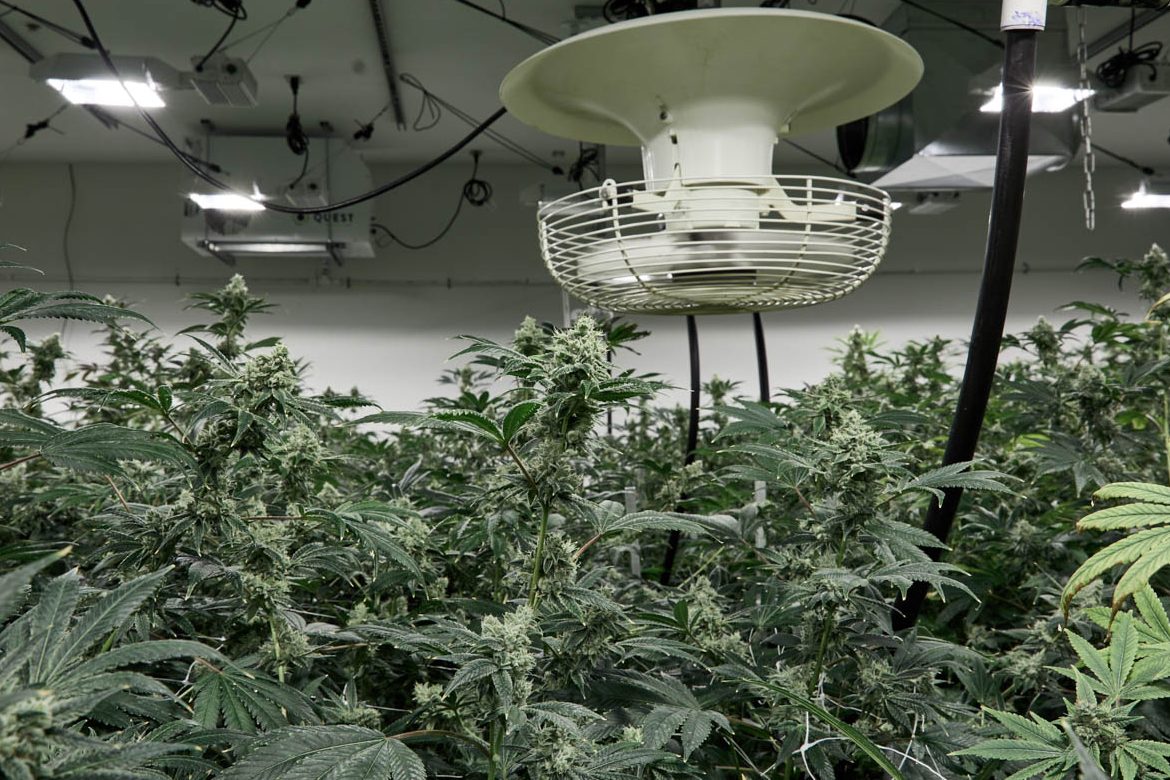Summer is a busy season for internships — and the cannabis industry is no exception. As the business of marijuana continues to boom, new jobs are being created and internships are a great way to get a foot in the door with a cannabis-related company.
“We want to tap into a talent pool that has fresh ideas and isn’t jaded by previous experiences,” said Squire Velves of High There, a social media network for cannabis users that’s actively offering internships.
Traditionally, interns trade menial office work for college credit and on-the-job experience. However, in a changing political and legal climate, internships are now more frequently offered as paid positions that serve as the first rung on a ladder to possible full-time employment.
As can be expected in the vibrant category of cannabis, demand for internships is higher than ever.
It’s a highly competitive job market, but internships can lay the groundwork for professionals ready to lead the cannabis industry into the future. So applicants need to be at the top of their game.
”If you’re involved in cannabis, you have to live your life with a tremendous amount of truth and conviction,” said Rick Batenburg of Cliintel Capital Management Group. “To do what you say you can do and believe that cannabis will be more legal tomorrow than it is today.”
The evolving landscape of the cannabis job market means that internships are more diversified than ever. We put together a list of the top positions currently being offered this summer. Get your resume together now. Most of these are expected to be filled quickly.
Weed and Technology Internship — High There!
Venice, California
High There! is a social network designed for cannabis users to connect — available as an app for iPhone and Android with about 600,000 registered users. The company behind it is currently seeking interns for its office in Venice, California. This isn’t a throwaway gig for filing papers or going on coffee runs. High There! wants candidates with serious knowledge of data analytics, market research, and community engagement.
Pay is to be determined. You don’t have to be in school to apply for the internship, which has the potential to eventually lead to a full-time position with the company. As High There! continues to grow, more internships are expected to be offered in a variety of departments, so check back often.
“There are different verticals within the company,” said Velves. “There’s a technology team, analytics team, marketing team, sales team, and design team. We’re interested in fresh new talent in all sectors.”
To learn more, contact High There! through the contact form on the company’s website.
Weed and Investment Internship — Cliintel Captial Managment Group
Denver, Colorado
As a venture capital firm holding about $125 million in assets, Cliintel Capital Management Group in Denver is looking for a very specific candidate for its internships. It has to be someone with a technical understanding of finance, capital markets, and the risk tolerance for investing.
“We’re looking for motivated, financially experienced individuals coming out of either financial programs at the grad school level or at the graduate level,” said Chief Investment Officer and owner Rick Batenburg.
About 80% of the firm’s assets are in the cannabis industry, but this isn’t a position for someone trying to figure themselves out and get a foothold in the marijuana business. “This is not an internship that’s going to be heavy-cannabis,” Batenburg said. “It’s definitely heavy venture capital. We deal in cannabis because it’s the emerging market right now. We deal in cannabis because we’re in Colorado and it has the most growth potential.”
Batenburg said the firm takes a “dispassionate” and “agnostic” view of cannabis — “which is important because people make bad decisions with money when they’re passionate about merger-and-aquistion decisions.”
That’s not to say the job is without perks. (“We get a lot of free weed and CBD,” Batenburg said.) Dining out at expensive restaurants is also part of the deal. “We go to where people have the money,” Batenburg explained. “We spend our time in nice places with interesting, eclectic, smart people.”
But expect to put in long hours and hard work with research, data compilation, documentation, evaluating and processing deals, and due diligence. “We have no set hours of any kind. We work all the time. This is not for the faint of heart.”
Ready for the challenge? Those interested can inquire about the internship by emailing Monica Pina. Batenburg says he’ll take zero or five interns at any given time, depending on whether they offer value. The internship is paid, but the wage is to be determined. “If they’re going to be venture capitalists, they better be ready to negotiate.”
Weed and Brand Management Internship — Mattio Communications
New York, New York
For those eager to bring brands to life, Mattio Communcationsis a public relations and marketing company that specializes in cannabis. Founded by Rosie Mattio, the firm is offering a summer internship as a paid position that could potentially lead to full-time work.
“We’re interested in smart people who want to learn about the industry, want to contribute, and can keep up in a fast-paced office,” said Talent Acquisition Leader Regina Rear-Connor.
If accepted, expect to wear a lot of hats. An intern will mix fun activities, such as coordinating with influencers or managing events, to less glamorous work including filing papers or going to the post office. Along the way, interns will learn about search engine optimization (SEO) and search engine marketing (SEM) strategies — in other words, how to rank high on Google.
“Being a small agile team, we all do whatever it takes to get the job done and make sure our clients are serviced and happy,” Rears-Connor said. “The interns will be the same.”
Those clients cover all corners of the cannabis business: vapes, prerolls, flower, and modern products such as medical patches or even peanut butter treats for dogs. The Mattio Communications office is in an upbeat shared workspace that encourages social interaction. Although the New York public relations industry is known for its cutthroat nature, Mattio stresses an environment in which collaboration and mentoring are key, and talented people are supportive of one another.
For more information about the internship, email careers@mattio.com. Rears-Connor said, “It’s a great opportunity to dip your toes in the water and see if this is an industry for you.”
Weed and Business Services Internship — Springbig
Boca Raton, Florida
Springbig in Boca Raton, Florida, about 45 miles (72 kilometers) north of Miami, has been using interns for years in marketing, service, and sales. “We’ve had great success with interns,” said Vice President of Marketing Natalie Shaul. “Basically every intern we’ve had has either stayed here to be full-time or keeps coming back each summer until they can be full time.”
The company specializes in customer relationship management (CRM) for cannabis dispensaries. Software is used to develop loyalty rewards programs, organize sales data, and maintain customer engagement through text messages and other interactive services.
Interns at Springbig are encouraged to try a little bit of everything and gravitate toward duties that interest their natural curiosity. Development, client services, sales, marketing, account management, human resources, finance — it’s all fair game with nothing set in stone.
Candidates don’t have to be in school, but Springbig prefers interns who are “college age.” The internship is paid and class credit is available. Scheduling is flexible, but regular hours are typically 9 a.m. to 6 p.m. Perks include yoga classes in the office, as well as luncheons and other group outings. When applying for an internship, expect the unexpected. Personality counts more than a loaded resume.
“We’re really big on charisma,” Shaul said.
Learn more about the internship program by emailing Springbig
More Cannabis Industry Internships Opportunities
Acreage Holdings is looking for an intern for its eight-week summer program in New York City. The position is paid and open to students enrolled in an accredited college or university. For more information and to apply, visit Acreage’s careers page.
Cresco Labs in Chicago is taking applications for a summer internship. It runs from June to August 2019 and offers wide exposure to sales, marketing, and other departments. Pay is $15 per hour and the position is open to students with a minimum grade point average (GPA) of 3.0 or higher. For more information and to apply, visit Cresco Labs’ careers page.
Green Thumb Industries is offering a “career immersion” alternative to the traditional summer internship, with exposure to the production, sales, and marketing of cannabis. Two applicants will be selected for the paid 8-10 week program in Chicago. For more information and to apply, visit Green Thumb Industries’ internship posting.
MondoMeds is seeking a social media intern for three months during summer 2019 in Venice, California. Pay is $150 a month. For more information and to apply, visit MondoMeds’ Indeed.com listing.






